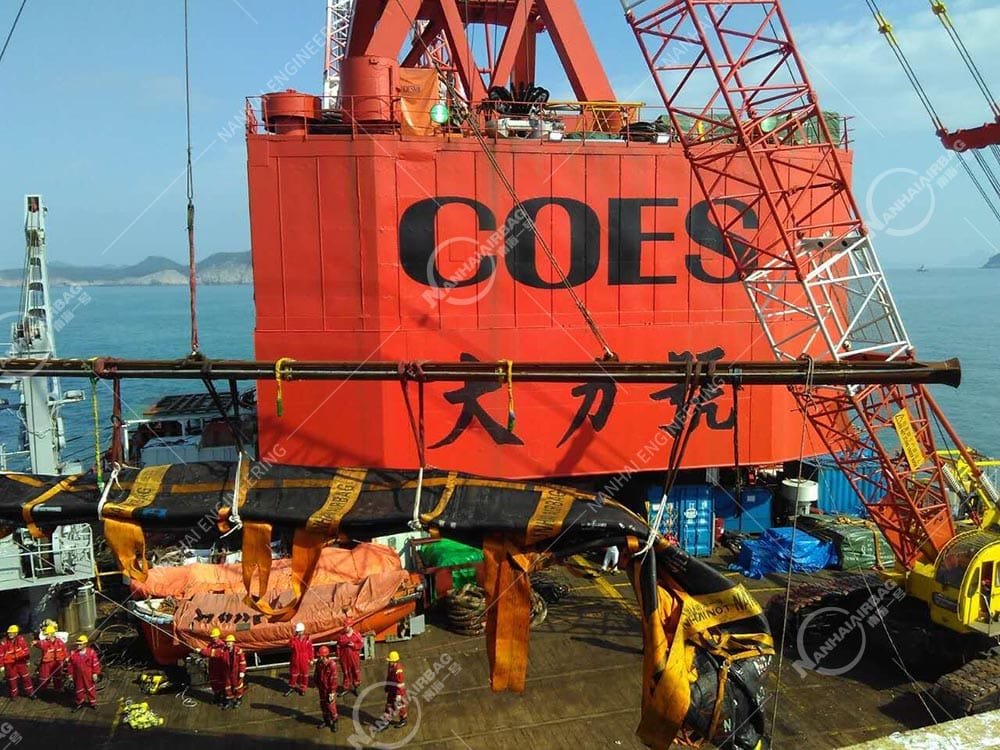Caisson Moving Airbag
11/11/2024Advantages of Caisson Moving Airbags
11/12/2024Salvage Airbags

Applications
- Shipwreck Recovery: Used to lift sunken ships to the surface in marine accidents, helping to restore the wreck to the water surface.
- Underwater Salvage: Can be used for retrieving sunken objects, equipment, or debris from the seabed, especially in deep-sea operations.
- Marine Rescue: In case of a ship listing or sinking, lifting airbags can be used for rapid flotation to ensure the safety of the vessel or equipment.
- Heavy Object Salvage: Used to recover heavy objects like sunken cargo or machinery from the seabed.
Key Features
- Strong Buoyancy: Provides substantial buoyancy to lift large ships or heavy objects.
- Flexible Operation: The inflation level of the airbags can be adjusted to control the lifting process precisely.
- Pressure Resistance and Durability: Constructed from specialized pressure-resistant materials, airbags can operate at great depths, providing stable performance without rupture.
- Ease of Transport and Use: Lifting airbags are typically foldable for storage and easy to deploy when needed.
Considerations for Use
- Safety: The inflation and lifting process should be conducted by trained professionals to ensure the safety of the ship and salvage equipment.
- Depth Limitations: Different types of airbags are suitable for different water depths, so it’s important to select the appropriate airbag based on the depth of the salvage operation.
- Proper Configuration: For large-scale salvage, the number and distribution of airbags must be properly configured to ensure even buoyancy, preventing tilting or damage to the object being raised.
Conclusion
Salvage airbags are highly effective tools for underwater salvage, playing a crucial role in shipwreck recovery, deep-sea object retrieval, and marine accident management. Their ability to provide efficient buoyancy and gradual flotation makes them indispensable for such operations.
